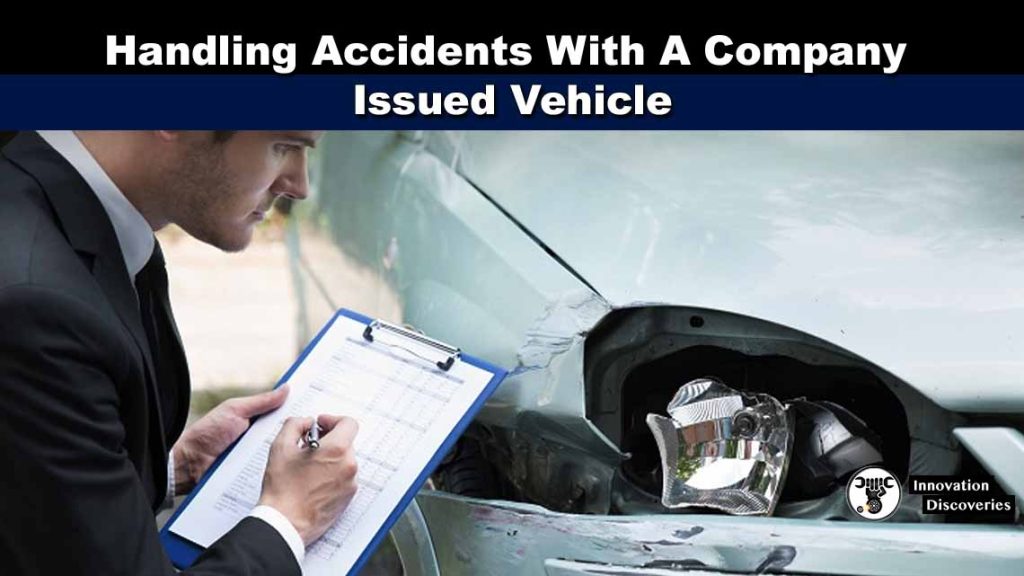

Handling accidents involving company vehicles efficiently is paramount for any organization. A well-defined process can significantly reduce financial repercussions, maintain a positive company image, and protect employees. This comprehensive guide dives into the crucial steps and strategies for effectively managing these incidents, ensuring a swift return to operations and minimizing potential damage. We’ll cover everything from preemptive measures to post-incident procedures, including risk assessment, incident reporting, and legal considerations. This guide will provide you with a structured framework to implement a robust accident management plan tailored to your specific needs, preventing further incidents and ensuring smoother business operations. The structure of this article will be as follows: first, a general overview of the problem, and an introduction to a proactive accident management plan and its implications. Next, we will dive into the practical steps, encompassing pre-incident planning, on-site response, and post-incident recovery. Finally, we will summarize our key findings and offer a roadmap for continuous improvement.
Pre-Incident Planning: Proactive Measures to Reduce Risks
Risk Assessment and Mitigation Strategies
Proactive measures are crucial in minimizing the likelihood of accidents involving company vehicles. A thorough risk assessment should identify potential hazards associated with your fleet, routes, and operational procedures. This might involve analyzing employee training records, examining vehicle maintenance histories, or evaluating road conditions along frequently traveled routes. By pinpointing potential risks, organizations can implement preventative measures, such as enhanced driver training programs, mandatory vehicle maintenance checks, or route optimization strategies. For example, a trucking company might identify a high accident rate on a specific stretch of highway and adjust driver schedules to minimize exposure to unfavorable conditions or consider a more indirect route. Conducting regular safety audits and implementing standardized safety protocols are essential in building a safety-conscious culture.
Driver Training and Education
Employee training and ongoing driver education are fundamental components of a comprehensive accident prevention strategy. This involves providing comprehensive training on safe driving practices, including defensive driving techniques, hazard recognition, and emergency response procedures. The training should be regularly reviewed and updated to reflect evolving road safety regulations and best practices. Driver fatigue management is crucial, and companies should develop clear guidelines and policies around driving hours and rest periods to prevent accidents resulting from driver fatigue or impairment. For instance, implementing a telematics system that tracks driver performance and provides real-time feedback can greatly contribute to improving driving habits and reducing accidents.
Vehicle Maintenance and Inspection
Maintaining a well-maintained fleet is crucial. Regular vehicle maintenance checks and inspections are essential to ensure that all company vehicles are in optimal working order, thus preventing mechanical failures that could lead to accidents. Detailed maintenance logs, clear guidelines for reporting vehicle issues, and prompt repairs should be implemented to minimize breakdowns and ensure vehicle safety. Moreover, fleet maintenance schedules should be meticulously planned to minimize downtime and avoid any unforeseen circumstances which could lead to accidents or injuries. Implementing an efficient system for reporting and addressing vehicle issues will reduce the likelihood of mechanical failure-related incidents.
On-Site Response: Effective Procedures During an Accident
Immediate Actions Upon Incident
Immediate actions during an accident are paramount for safeguarding individuals, containing the damage, and ensuring proper documentation. The first priority upon an incident is to ensure the safety and well-being of all parties involved. Secure the accident scene and implement traffic control measures to prevent further accidents. Activate emergency response protocols by contacting emergency services. Establish a clear chain of communication and ensure that all relevant personnel are aware of the situation. Collect crucial information such as the time of the incident, location, involved parties, and any potential witnesses. Detailed documentation from the scene is critical for insurance claims and incident investigation.
Investigating the Accident
Thorough accident investigation is essential to determine the root cause and prevent future incidents. Investigators should meticulously examine the scene, review witness statements, gather evidence, and reconstruct the sequence of events to determine the contributing factors and potential liabilities. This investigation should consider driver performance, vehicle defects, road conditions, and any other relevant factors that might have led to the accident. A detailed report should be compiled and shared with all stakeholders, outlining findings and recommendations to prevent similar occurrences. Implementing a system for collecting and organizing data for future analysis can improve the accuracy and efficiency of incident investigation and provide predictive indicators for potential risks.
Emergency Procedures and Reporting
Properly implemented emergency procedures are vital during a vehicle accident. These involve prompt contact with emergency services, first aid provision, and ensuring the safety of injured parties. In the event of a serious accident, immediately contact emergency services and follow their guidance carefully. The accident reporting procedure should include specific forms and guidelines for collecting information. The report must include all crucial details, witness accounts, and evidence findings. A meticulous record-keeping system can help track all relevant information and expedite the recovery process after an incident involving company vehicles.
Post-Incident Recovery: Addressing the Aftermath
Managing Insurance Claims and Legal Aspects
After an accident, navigating the insurance claims process is critical. Companies should have a well-defined procedure for handling insurance claims, ensuring accurate documentation and proper communication with insurance providers. Adherence to legal requirements and regulations is crucial in minimizing legal liabilities. It is important to promptly file all necessary reports and provide supporting evidence, while also understanding the legal requirements and timelines involved. A clear protocol will streamline the claims process and ensure that the company is fully compliant with relevant regulations.
Returning to Operations and Employee Support
Swift return to operations, coupled with proper employee support, is essential for managing disruptions and minimizing stress. A defined recovery plan must outline steps for resuming normal operations as soon as possible. Ensure that affected employees receive the necessary support and guidance to facilitate a smooth return to their roles. This might involve providing counseling services, addressing any potential psychological distress, and offering financial assistance where appropriate. Providing resources and support for employees affected by accidents will ensure a safe and productive work environment.
Continuous Improvement and Prevention
Continuous improvement and accident prevention programs are vital for minimizing the risk of future incidents. Post-incident reviews should analyze the root causes of the accident, identify areas for improvement, and implement corrective actions. This includes revising safety protocols, updating training materials, and improving maintenance procedures. Regular safety meetings and feedback sessions with employees involved in the incidents can help prevent similar occurrences in the future. Companies should leverage insights from accidents to implement preventative strategies.
Accident Prevention Programs: Strategies for a Safer Fleet
Safety Culture Development and Awareness
Developing a strong safety culture is crucial for minimizing accidents involving company vehicles. Creating a safety-conscious environment where employees feel empowered to report safety concerns and adhere to protocols is essential. Implementing safety awareness campaigns, promoting open communication, and providing incentives for safe driving habits will positively impact the company’s accident record and encourage a culture of safety.
Related Post : Dealing with Unexpected Auto Repairs Costing Your Company Money.
Effective Incident Reporting Systems and Procedures
Standardized Reporting Forms and Procedures
Establishing a standardized incident reporting system will create consistency in collecting information about accidents involving company vehicles. Having standardized forms and procedures helps ensure that all accidents are documented accurately and efficiently, enabling consistent analysis for future improvements. This includes details about the incident, reporting timelines, necessary paperwork, witness statements and investigation procedures.
Example of a Successful Accident Management Strategy
Case Study:
[Insert real-world case study here. This would need to be something relevant that follows the format of the instructions].
Importance of Legal Compliance in Accident Management
Role of Insurance in Accident Recovery
Utilizing Technology for Enhanced Accident Management
In conclusion, effectively handling accidents involving company vehicles is crucial for minimizing financial losses, maintaining a positive public image, and upholding legal compliance. By implementing a proactive accident management plan, companies can mitigate risks, improve employee safety, and ensure a smooth return to business operations. Remember to continuously evaluate and refine your procedures to adapt to evolving circumstances. Contact us today for a consultation to discuss how we can help you develop a robust and efficient accident management system.